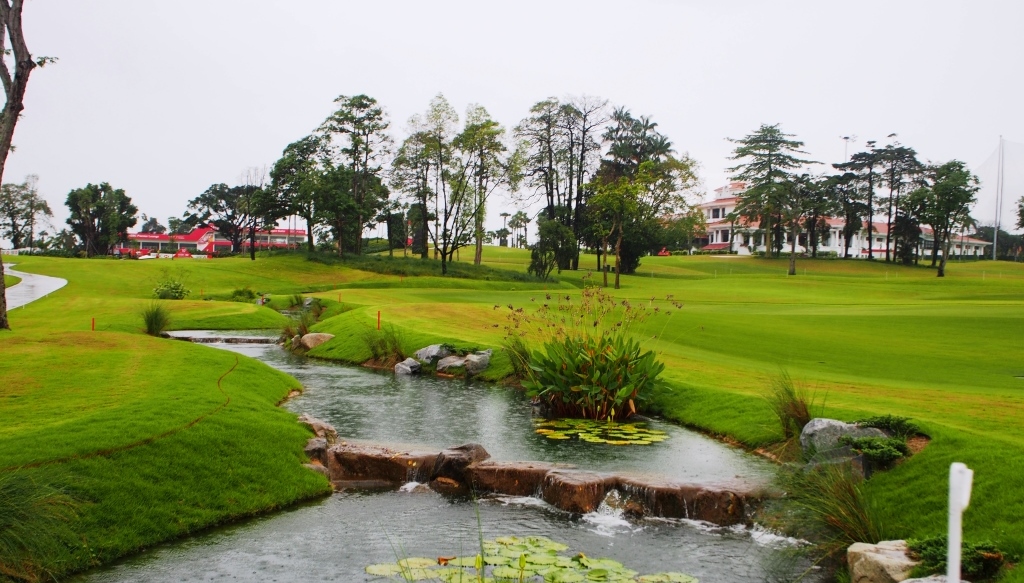Golf courses can increase property values and contribute to economic growth. They also attract wealthy tourists and are recognised as useful sites for business deals. The vast green spaces and well-maintained turf can be aesthetically appealing to some people and provide recreation.
With over 1,500 hectares (approximately 2%) of Singapore’s land area covered by 17 golf courses, there are concerns that they are taking up too much space and are environmentally unsustainable. In this article, I address these concerns and Singapore’s plans.
Environmental impacts of golf courses
Golf course management involves the use of pesticides and fertilisers, which can contaminate the environment (including water bodies), although mitigation measures are already in place. The use of pesticides and fertilisers is controlled and regulated by Public Utilities Board (PUB), and products are limited to a list of approved chemicals. But golf courses are also heavily irrigated. Even though this water comes from water bodies that collect rainwater, and water recycling is widely practiced, it takes a lot of energy to water the turf, in addition to what’s required for overall maintenance of the golf course (e.g., machinery).
Golf courses can also support biodiversity because they are home to species that are adapted to fragmented tree patches and open areas. In some instances, they can even enhance biodiversity, like in Tanah Merah Country Club, where planted, exotic vegetation attracts birds, such as red jungle fowl and herons. But that typically only happens in golf courses built on barren, reclaimed land. For golf courses built on non-reclaimed lands, the disturbance to the natural habitat can be extensive.
Although golf courses inevitably have detrimental impacts on the environment, the sustainability of their practices are improving with time.
So, what’s next
Based on the Ministry of National Development’s Land Use Plan released in 2013, over 200 hectares of golf courses will be freed up for other uses. Two golf courses (Jurong Country Club and Raffles Country Club) must vacate their premises by August 2017 and July 2018, respectively. There will be no new lease offered to some others, including Marina Bay Golf Course, Keppel Club, and Champions Public Golf Course. This is a welcome change, especially given that the 1999 Land Use Plan included up to 29 new golf courses. It seems that the government recognises the concern that golf courses take up too much space, especially considering that less than 1 % of the population plays golf.
However, do fewer golf courses mean more housing development? According to the 2013 Land Use Plan, land allocated to parks and nature reserves will increase from 5,700 hectares in 2010 to 7,250 hectares in 2030. Furthermore, the projected increase will mainly come from urban parks in housing estates. This may seem promising because residents use urban parks more than golf courses. But do urban parks hold higher ecological value? This warrants further studies on comparing the ecological values between urban parks and golf courses. While the death of some golf courses frees up land for development and more parks, it is important to note that quality, not quantity, of green spaces matters.
References
Soh A (2014) 200 ha of golf course land freed. The Business Times. http://www.businesstimes.com.sg/top-stories/200-ha-of-golf-course-land-freed
Colding J & Folke C (2009) The role of golf courses in biodiversity conservation and ecosystem management. Ecosystems, 12: 191−206.
Heng J (2017) Fewer golf greens, but more greenery from parks and trails. The Straits Times. http://www.straitstimes.com/singapore/environment/fewer-golf-greens-but-more-greenery-from-parks-and-trails
Ministry of National Development (2013) A high quality living environment for all Singaporeans. Land use plan to support Singapore’s future population. Ministry of National Development. https://www.mnd.gov.sg/landuseplan/e-book/files/assets/basic-html/index.html#page1
Neo H (2001) Sustaining the unsustainable? Golf in urban Singapore. The International Journal of Sustainable Development & World Ecology. 8(3): 191−202.
Neo H (2010) Unpacking the Postpolitics of Golf Course Provision in Singapore. Journal of Sport and Social Issues, 34(3): 272−287.
